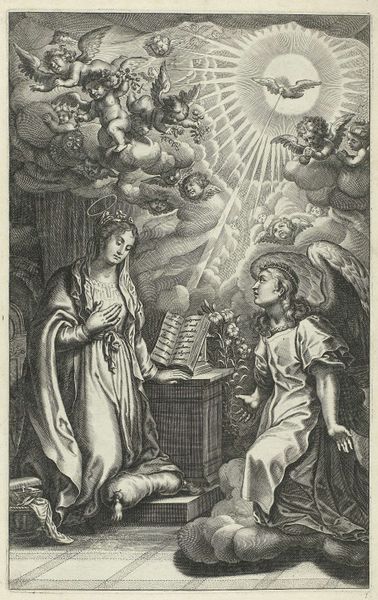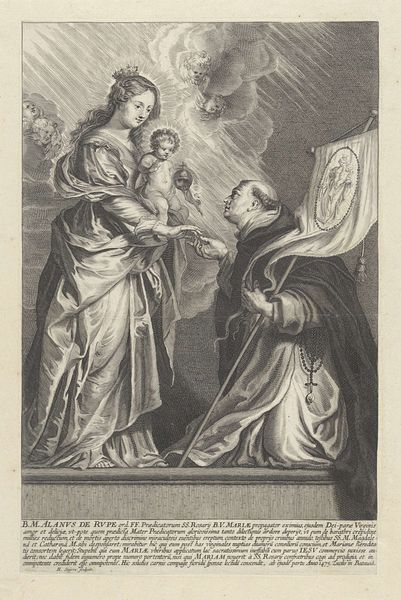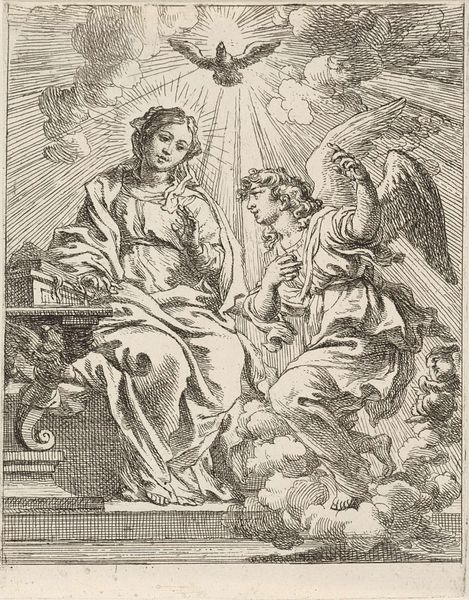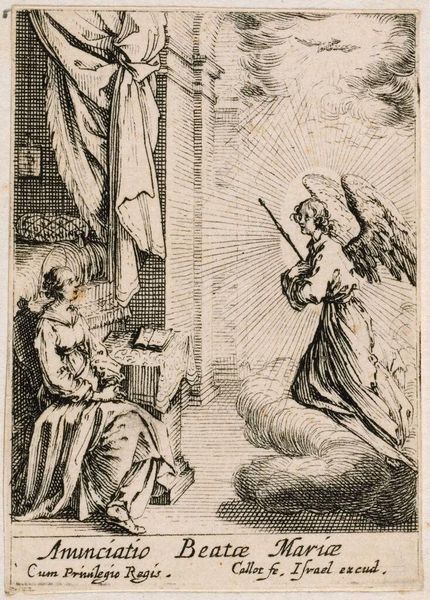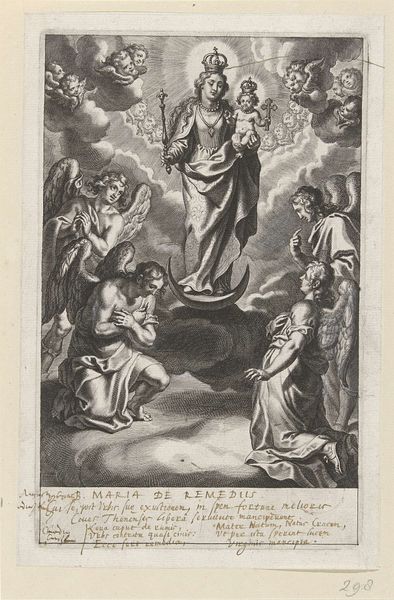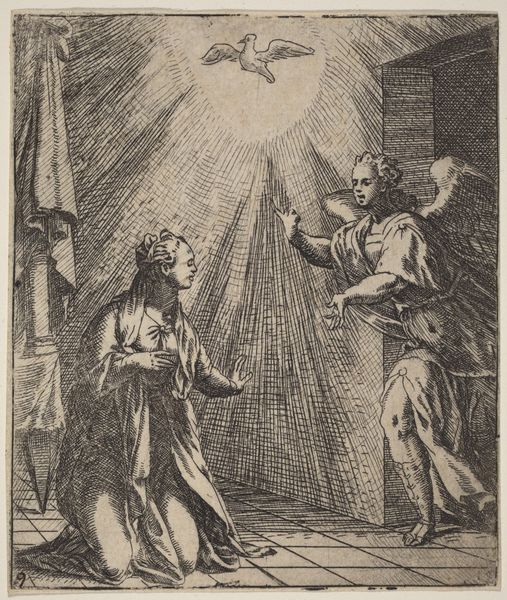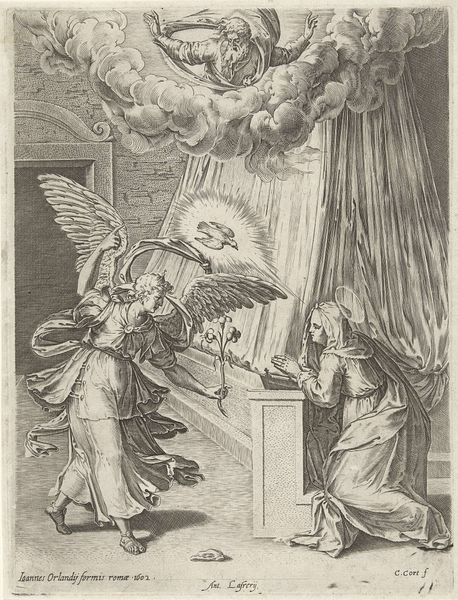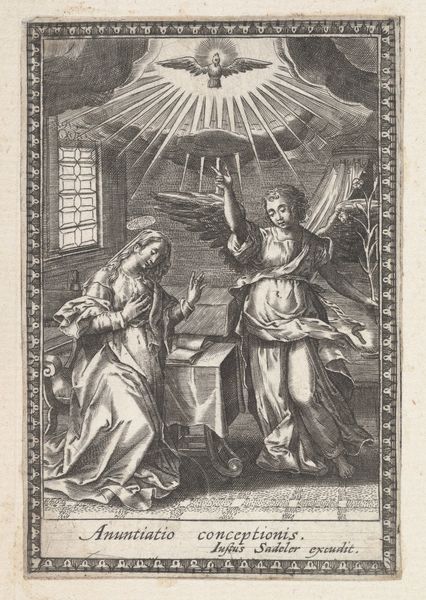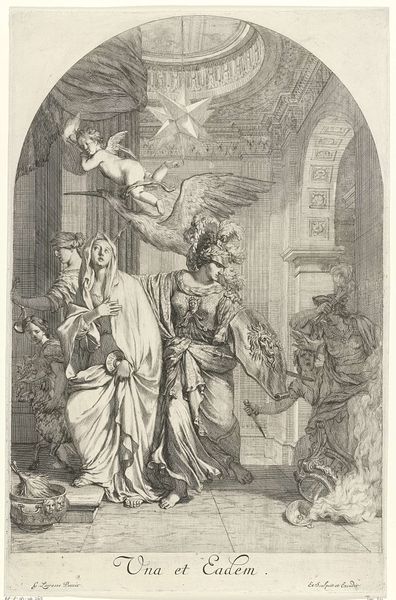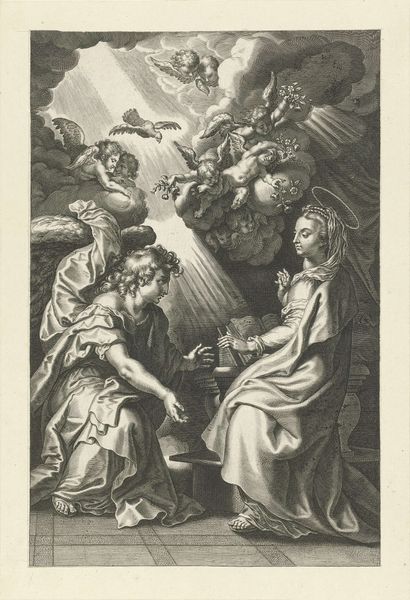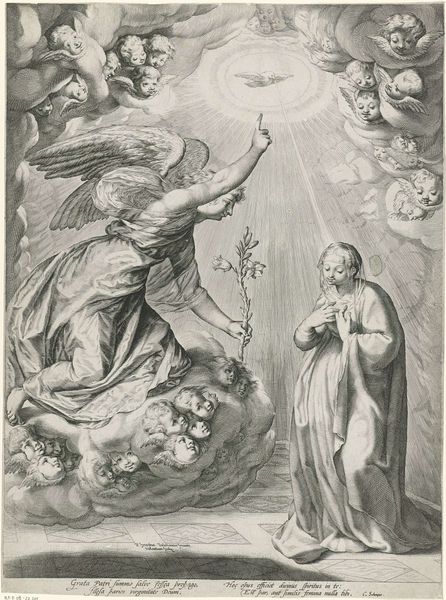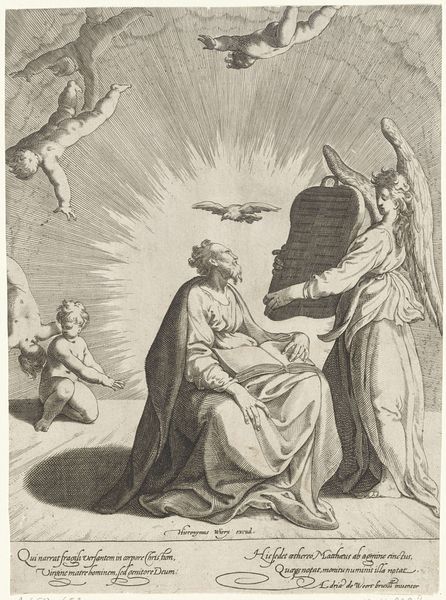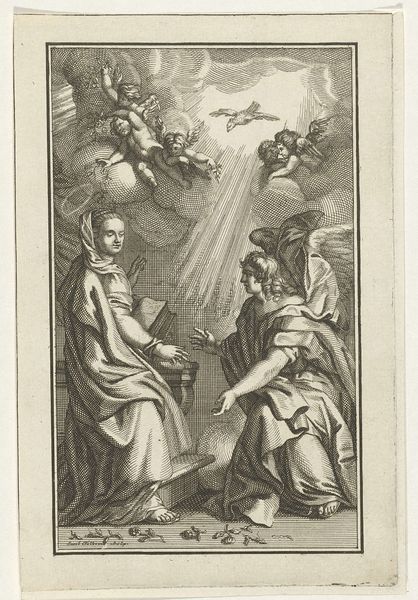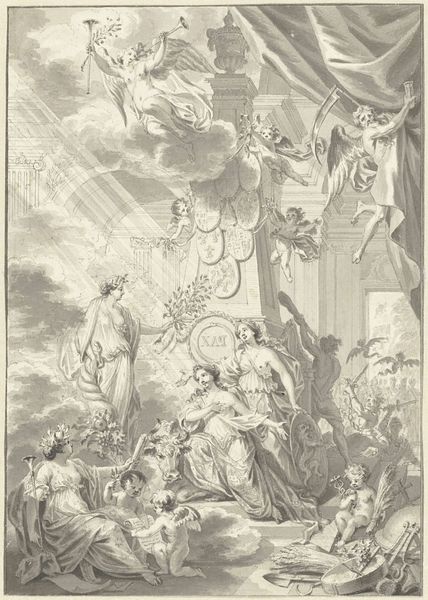
print, engraving
#
allegory
#
baroque
# print
#
figuration
#
line
#
history-painting
#
engraving
Dimensions: height 240 mm, width 150 mm
Copyright: Rijks Museum: Open Domain
Curator: Here we have a piece called "Annunciation," an engraving from between 1629 and 1729 by an anonymous artist. What strikes you initially? Editor: It feels… crowded, yet ethereal. The density of line work creates this otherworldly atmosphere, but there's almost too much happening. All those cherubs, the intense radiating light… Curator: The baroque loved drama! This print exemplifies how religious and allegorical themes were disseminated amongst the public. Prints democratized art in a way. Editor: Democratization, yes, but look at the angel Gabriel's wing, almost obscuring his face! The lines are exquisite, forming complex, overlapping patterns, but it complicates the legibility, doesn't it? The viewer has to spend significant time decoding the image. Curator: And that very act of decoding reinforces its importance. Images like this played a vital role in shaping religious understanding and solidifying the power of the Church in everyday life. They reinforced biblical narratives. Editor: Tell me about the composition though; the use of light is interesting. Notice how those beams are strategically placed as though spotlighting her, even amid that bustling sky? Curator: Well, the strategic emphasis also reinforces the Immaculate Conception narrative that was still being cemented as Church dogma during this period. That’s reflected in its cultural interpretation. Editor: The engraver skillfully renders the folds and weight of Mary’s robe using delicate, modulated lines, drawing my eye immediately toward the texture. The whole scene relies on the balance of light and dark to give a dramatic stage-like quality, from heaven to earth. Curator: Absolutely. And let’s consider this work in relation to its function. These weren't just aesthetic objects; they served didactic purposes, shaping beliefs. Anonymous, working perhaps for a religious order, yet shaping a population’s imagination. Editor: It leaves me reflecting on the formal language here—the sheer abundance of lines, a true visual spectacle that transcends just religious meaning and delivers powerful aesthetic insight. Curator: I agree. Considering the social context along with the artwork, though, you gain such a complex sense of the period, a beautiful reflection of both technique and culture.
Comments
No comments
Be the first to comment and join the conversation on the ultimate creative platform.
